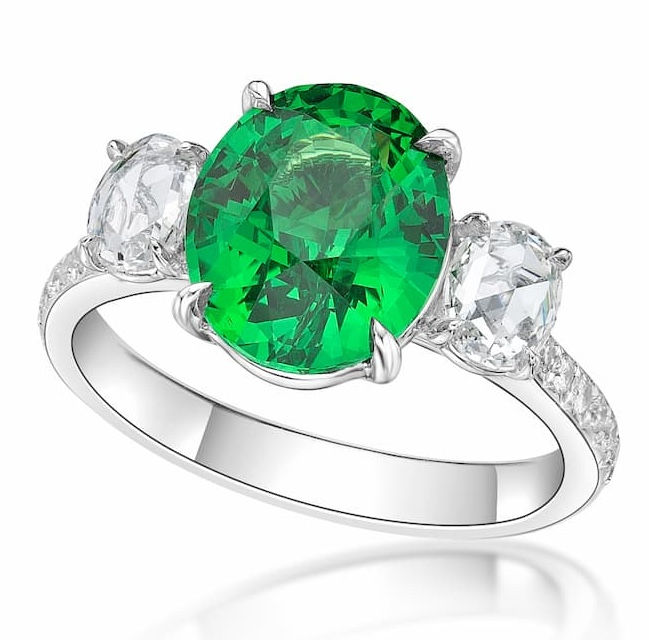When Science Meets Semantics: Why Gemstone Language Matters More Than You Think
- Caram

- Jun 27
- 3 min read
Updated: Aug 11
By Rahul Jain | #CaramGems
In the world of fine gemstones, the tiniest nuances can mean everything. A single word on a gem lab report — "heated" vs. "unheated", “emerald” vs. “green beryl”, “Tanzanite” vs. “zoisite” — can dramatically impact perception, value, and trust.
The Importance of Clarity in Gemstone Language
I was particularly heartened to read the recent press release from the Laboratory Manual Harmonisation Committee (LMHC), which met this May in Basel under the auspices of the Swiss Gemmological Institute SSEF. This meeting highlighted the pressing need for clarity in gemstone terminology.
Since 2001, this consortium of seven leading gem labs — from GIA to Gübelin, SSEF to the Gemological Institute of Thailand — has quietly worked to harmonize how treatments, origins, and nomenclature are disclosed across reports. Their mission is not glamorous, but it is critical: to bring clarity and consistency to a market that often confuses even seasoned professionals.
The Challenges We Face
At Caram, we encounter this issue daily. We’ve seen cases where the same ruby was given a Burmese origin by one lab and Mozambican by another — despite both being respected institutions. Or where the terminology on treatment differs enough to raise eyebrows with serious collectors.
It’s not malice. It’s complexity. Each lab has its own methodology, legacy systems, and interpretations. For clients — especially those investing significant amounts in rare gemstones — this variation can feel like smoke and mirrors. In an age where transparency is paramount, the lack of standardization is one of the most vexing issues in our trade.
The Role of a Trusted Jeweller
So what does this mean for you? It underscores the value of having a jeweller who is not just a seller, but a guide. Someone who understands not just what’s on the certificate, but what it truly means — in scientific, historical, and market terms.
At Caram, we’ve always believed that our role extends far beyond the transaction. We interpret, contextualize, and stand by the integrity of every gem we offer. Whether it’s explaining the difference between tanzanite and zoisite, or navigating the intricacies of colour stability in corundum, we bring clarity where confusion often reigns.
The Path Forward
Harmonization efforts like those of the LMHC are a step in the right direction. But until that language becomes universally accepted and enforced, your most valuable asset remains an experienced, trustworthy advisor who lives and breathes this trade. We’re proud to be that guide for our clients — combining over 50 years of heritage with an uncompromising eye for quality and authenticity.
Embracing Ethical Practices
As we navigate the complexities of gemstone language, we also prioritize ethical practices. Each piece we offer is not just a product; it’s a story crafted with care. We believe in sourcing gemstones that are not only exquisite but also ethically obtained. This commitment ensures that your investment appreciates over time, both in value and significance.
Personalization at Its Finest
Every gemstone we provide is bespoke, tailored to your unique story. We understand that discerning collectors seek more than just a piece of jewelry; they desire an heirloom quality item that resonates with their personal journey. Our team is dedicated to helping you find the perfect gem that reflects your individuality.
🔎 Learn more about the LMHC's efforts here: www.lmhc-gemmology.org
💎 Discover Caram’s commitment to integrity and excellence at www.caram.de
CaramGems Gemstones TrustAndTransparency Gemology FineJewelry SSEF GIA LuxuryWithIntegrity TradeTalk
In conclusion, the language of gemstones is more than mere semantics; it shapes the very foundation of trust and value in our industry. By choosing a knowledgeable and ethical jeweller, you ensure that your journey into the world of fine gemstones is not only rewarding but also enriching. Together, let’s celebrate the beauty and integrity of these precious stones. Reserve Your Gemstone today and embark on a journey that is as unique as your story.




Comments